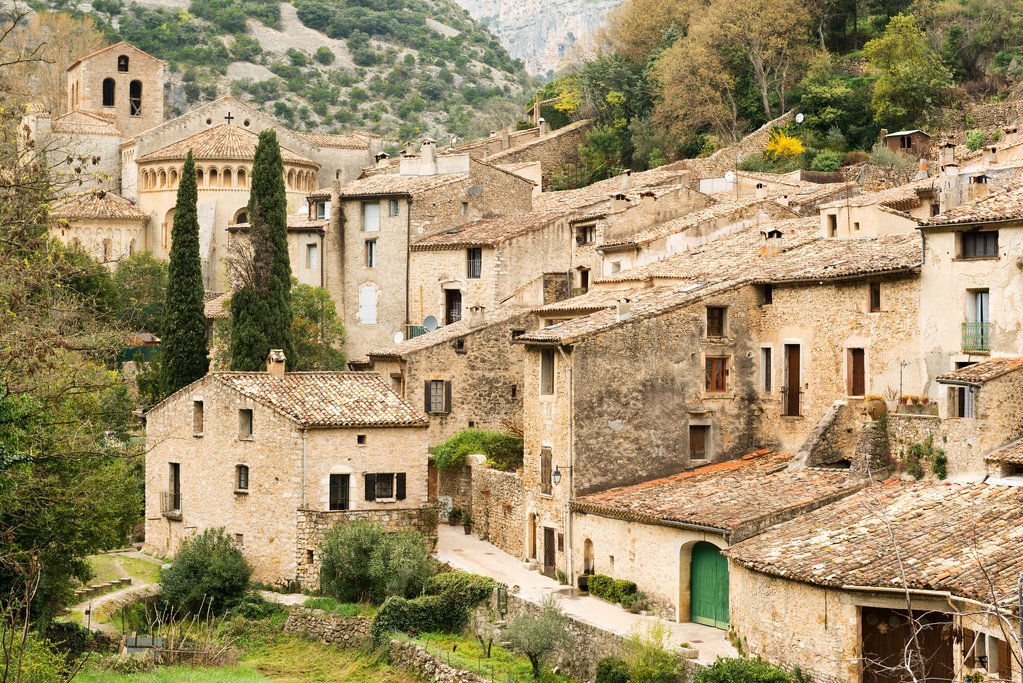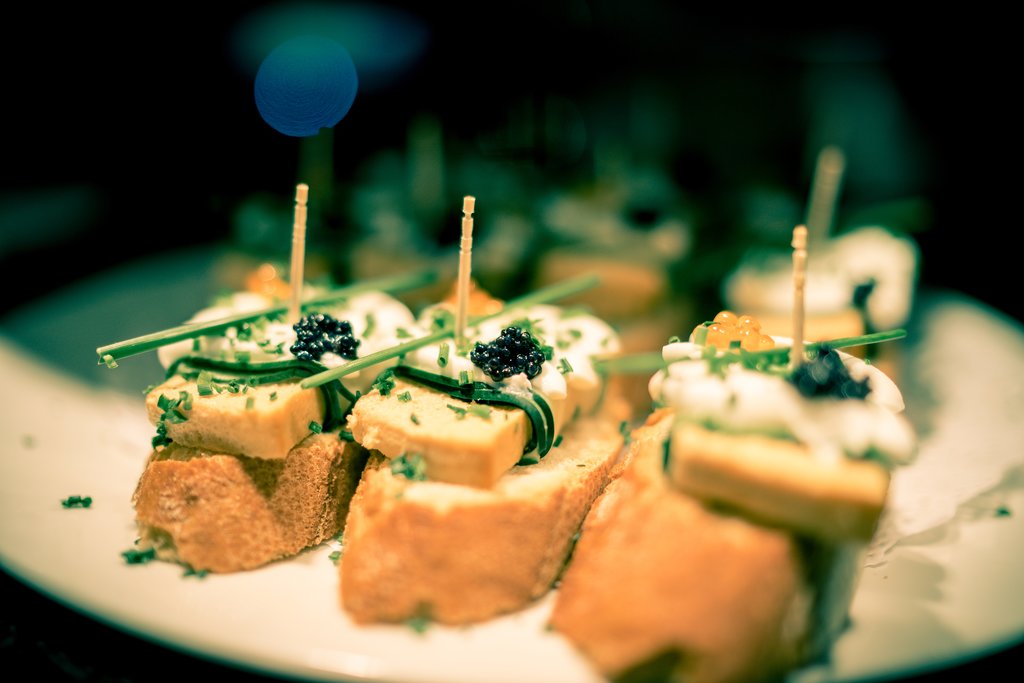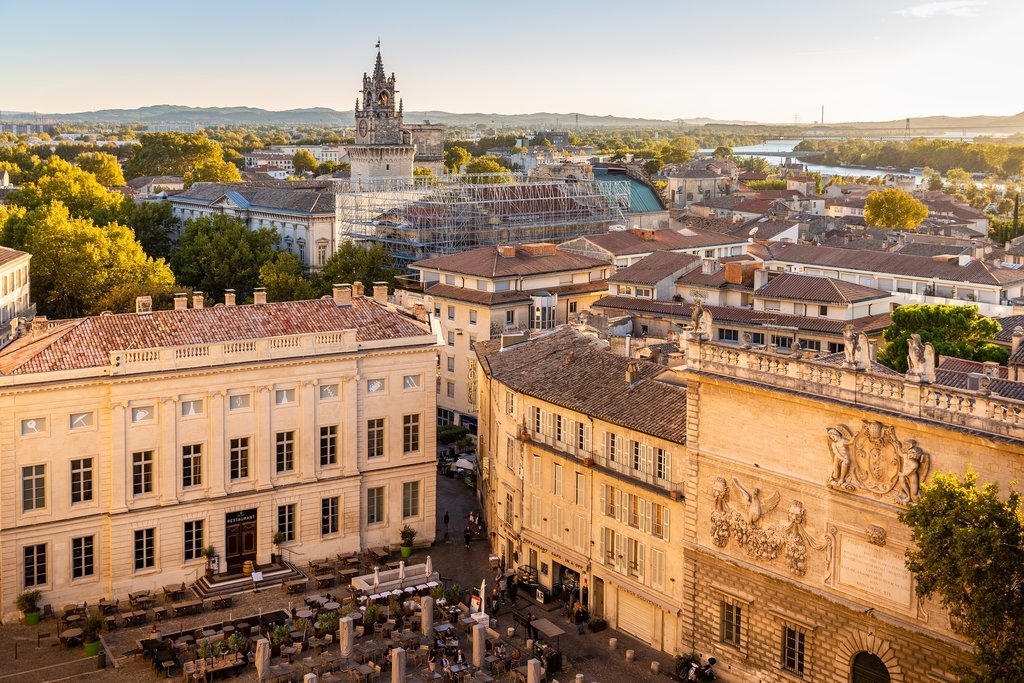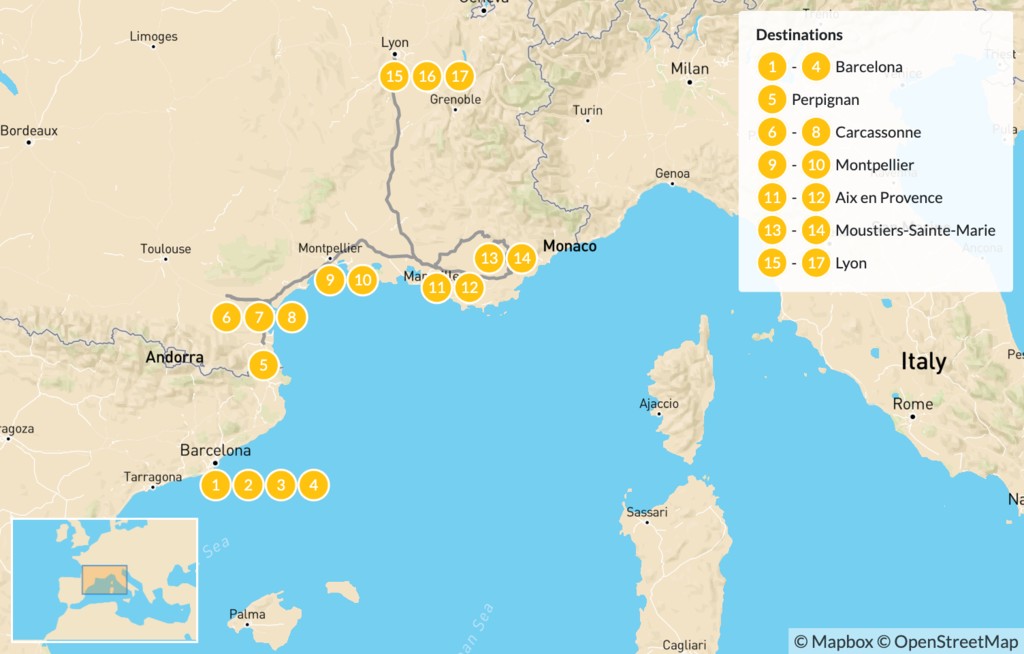
Spain and France Road Trip: Barcelona, Carcassonne, Montpellier, Provence, Lyon, & More - 18 Days

Highlights
- Explore Roman ruins in Tarragona
- See Perpignan, the former capital of Majorca Kingdom
- Tour one of Europe's most formidable defensive fortresses
- Browse markets in Aix-en-Provence
- Taste the best of Lyon’s cuisine
Brief Itinerary
| Day | Highlights | Overnight |
|---|---|---|
| Day 1 | Arrival in Barcelona & Self-Guided Afternoon Tour | Barcelona |
| Day 2 | Art Nouveau & Tapas in Barcelona | Barcelona |
| Day 3 | Travel Back in Time to Tarragona | Barcelona |
| Day 4 | A Day With Salvador Dali | Barcelona |
| Day 5 | Transfer from Barcelona to Perpignan & Afternoon Free | Perpignan |
| Day 6 | Transfer from Perpignan to Carcassonne & City Tour | Carcassonne |
| Day 7 | Tour of the Cathar Castles | Carcassonne |
| Day 8 | Lastours Castles, Wine Tasting, & Canal du Midi | Carcassonne |
| Day 9 | Transfer from Carcassonne to Montpellier | Montpellier |
| Day 10 | Montpellier & Saint Martin de Londres | Montpellier |
| Day 11 | Montpellier to Aix, Visit Nîmes & Avignon | Aix en Provence |
| Day 12 | Hilltop Villages & Wine in the Luberon: Full Day Tour | Aix en Provence |
| Day 13 | Aix City Tour & Transfer to Moustiers-Sainte-Marie | Moustiers-Sainte-Marie |
| Day 14 | Verdon Gorges: Europe's Highest Canyon | Moustiers-Sainte-Marie |
| Day 15 | Napoleon Route from Verdon Gorges to Lyon via Grenoble | Lyon |
| Day 16 | Culinary Tour of Lyon | Lyon |
| Day 17 | Beaujolais, Bresse, & Perouges | Lyon |
| Day 18 | Depart Lyon—Au Revoir, France! |
Detailed Itinerary
Day 1: Arrival in Barcelona & Self-Guided Afternoon Tour

Welcome to Spain! Upon arrival at Barcelona's El Prat Airport, a private driver will take you into the city where you can check into your hotel and unwind. You'll then have the afternoon free to explore on a self-guided tour.
We recommend first visiting Mt. Montjuic and the surrounding area. Montjuic is a famous hill that stands 1,988 feet (606 m) high and overlooks the Port of Barcelona. Take the Montjuic Cable Car from the metro station near Olympic Park, which takes you up to the 17th-century Castle Montjuic and offers panoramic views of the city. You can also access Montjuic via cable car from Barcelona Beach and by funicular elevator adjacent to the cable car.
The Poble Espanyol is also fun to visit. Constructed in 1929, this open-air museum features over 100 recreated buildings in the style of traditional Spanish villages. When the sun goes down over the city, make sure you're near the Magic Fountain of Montjuic, named for the dazzling display of water and colored lights that occur after dark. It's the best free show in the city, one with an effect heightened by the hundreds of spectators and a communal atmosphere.
Day 2: Art Nouveau & Tapas in Barcelona

After breakfast, make your own way to the meeting point for your tour. Your first stop today is the iconic Sagrada Família, the most visually impressive church in Barcelona. This Gothic/Art Nouveau basilica is another brainchild of Gaudí, and although construction began in 1882, it technically remains unfinished to this day. However, that didn't stop Sagrada Familia from earning UNESCO World Heritage status. It's a popular tourist draw but you'll be able to breeze right past the line with your prearranged tickets.
You'll then have the afternoon and evening to explore the cuisine of Barcelona with the help of an expert guide. The adventure kicks off at an old bodega turned tapas bar, where things have hardly changed since the 1930s. With a glass of the city’s favorite aperitif—sweet vermouth—in hand, you’ll enjoy a tasting of locally cured meats, cheeses, olives, and other Spanish delicacies.
Your foodie excursion continues with a stroll through Barcelona’s Gothic Quarter, during which your guide will point out sights of interest on the narrow medieval streets as they lead the way to the next eatery. This second tapas bar is a staple of Barcelona and a true local haunt. Although it only has a few dishes on the menu, they’re all excellent.
Afterward, head to another historic neighborhood where your guide will continue to reveal insight into the area's architecture, history, and culture. Eventually, you'll arrive at the third and final tapas bar. Pull up a seat, because it's time to indulge once more in traditional Catalan dishes paired with the region's globally renowned wine. Delicious must-try tapas include patatas bravas (fried potatoes with aioli), calamari, gambas (prawns), cured ham, croquettes, mussels, and chorizo.
And it wouldn't be dinner in Barcelona without something sweet to cap the meal. Be sure to save room for a traditional Spanish dessert, like crema Catalonia. This sweet custard is made with oranges and cinnamon and is Spain's answer to the classic creme brûlée.
Day 3: Travel Back in Time to Tarragona

After breakfast, meet your private historian-guide at the hotel for a pickup, then hit the road for the ancient Roman city of Tarraco.
On this half-day tour, you'll learn about the days of the Roman Empire in the beautiful city of Tarragona on the Costa Dorada. As the former capital of Hispania Citerior, one of the Roman provinces on the Iberian Peninsula, there's no shortage of history to explore. Travel 2,000 years into the past, to the days of gladiators, mighty legions, and ruthless emperors.
The city lies 62 miles (100 km) south of Barcelona, in an area known for its crystal-clear waters and white sand beaches. Tarragona's historical center, full of colorful narrow streets, is a UNESCO World Heritage Site. It's also home to one of the best-preserved Roman archaeological sites in Spain.
After exploring the city to your heart's content, return to Barcelona for a free afternoon.
Day 4: A Day With Salvador Dali

Today's full-day excursion is dedicated to Salvador Dalí. This is your chance to get to the heart of Catalan Mediterranean culture, architecture, traditions, and delicious cuisine.
At the designated time, your guide will meet you at your hotel for the trip to the northern border of Catalonia, where you'll explore where Dalí was born, raised, and later worked. You'll also discover the area's scenery, culture, and politic landscape, which helped shape and inspire this world-renowned artist.
From Barcelona, head to Figueres, a small town near the border of France and one of the three points forming the so-called 'Dalí triangle.' It's also Dalí 's hometown. Spend some time strolling along the streets and squares that defined the artist’s early years.
You'll also visit the Dalí Museum, the world's largest surrealistic object. Designed by Dalí himself upon the ruins of the old municipal theater, the surrealist museum gives visitors an unprecedented look into the artist's mind.
Continue along the Costa Brava coast to the village of Cadaqués. This village, famed for its dramatic landscapes framed by bright white homes and the Mediterranean Sea, is the easternmost town on the Iberian Peninsula.
Just a mile from Cadaqués lies Portlligat, where you'll end your tour. In 1930, Dalí, this tiny, charming cove for his home, building his house atop several fishermen's huts. Today it's been converted into the House Museum, which allows visitors to see Dali's studio and take an intimate tour of the home where Dali lived with his beloved wife and muse, Gala.
Return to Barcelona in the evening.
Day 5: Transfer from Barcelona to Perpignan & Afternoon Free

Start your morning with a train ride to Perpignan in French Catalunya, a 3.5-hour trip north up the coast. You'll arrive at the train station in Perpignan, which according to the famous painter Salvador Dali, was the center of the world. Pick up your rental car, then hit the town for lunch.
In the afternoon, choose from one of the many options to make the most of your time in the region:
Visit the village of Banyuls Sur Mer, a 20-minute drive away. A botanical garden and aquarium have been open to the public here since 1885, and together they present a comprehensive view of the Eastern Pyrenees marine and terrestrial biodiversity. Diving fans will enjoy checking out the Marine Nature Reserve. Inside the city, the Maillol Museum, Chapel Notre Dame de la Salette, and a variety of wineries await.
Check out the cellars of Byrrh in Thuir, also a 20-minute drive away. With a history that dates back to the late 19th century, the cellars have established a long-lasting regional brand. Learn about the cellars on a guided visit and see the world's largest (and tallest!) oak vat.
Stroll through one of France's most beautiful villages, Villefranche-de-Conflent ( a 1-hour drive away.) Thanks to its strategic location at the confluence of three valleys, the region has a long history of human settlement, dating back to prehistoric times. Even before people settled in the area, water had carved little caves (known as canalettes) into the valley walls. Later, prehistoric humans used these caves for shelter. Explore all this and more on your afternoon visit to the area.
Day 6: Transfer from Perpignan to Carcassonne & City Tour

In the morning, make the two-hour drive northwest to Carcassone. Check in to your hotel and eat lunch before your private three-hour tour of the city.
View well-preserved military and religious architecture in one of Europe's most beautiful cities, and learn the history from a knowledgeable guide. You'll be transported back to the Middle Ages, during a time when the city's defenses were used to keep its occupants safe from attack.
Tour one of Europe's most comprehensive and formidable defensive fortresses and see the city's 52 towers (35 internal walls and 17 external). Walk down misleading stairs that sent enemy troops into a state of confusion, and immerse yourself into the atmosphere of holy wars that raged in the city during the time of the Cathars.
Chat with a local specialist who can help organize your trip.
Day 7: Tour of the Cathar Castles

Today's nine-hour tour includes two of the most intriguing Cathar castles—Queribus and Peyrepertuse. Start at Quéribus Castle, also known as Citadelle du Vertige, which, as its name suggests, perches on the edge of an impossibly steep cliff. During the time of the Cathar Crusade, the castle served as a shelter to the Cathars. In fact, it's often regarded as the last Cathar stronghold.
Stop for lunch in the storybook town of Cucugnan, then spend some time strolling the streets. Pause by the windmill and take in the views of the surrounding vineyards.
In the afternoon, continue to Peyrepertuse Castle, a ruined fortress. In former times, it was associated with the Counts of Barcelona, and later the Kings of Aragon. Its name is derived from Peirapertusa, the Occitan word meaning 'pierced rock'—fitting for a castle that juts sharply into the sky.
Day 8: Lastours Castles, Wine Tasting, & Canal du Midi

In the morning, head out for the first stop on your full-day tour—the Lastours Castles. The ruined castles sit on a rocky spur, high above the village of Lastours, surrounded by the deep valleys of the Orbiel and Grésilhou Rivers.
From here, continue to a small vineyard for a wine tasting before lunch. Meet with winegrowers and oenologists and learn about their different production methods while you sample excellent local wines. For lunch, sit down at a typical French restaurant for a taste of local specialties.
In the afternoon, make the one-hour drive to the beautiful village of Minerve, classified as one of the "Most Beautiful Villages of France." Stroll through the fortified medieval village, which perches high on a rocky outcropping high above the barren Languedoc landscape.
On the drive back to Carcassone, stop by the 350-year-old Canal du Midi for a walk along the water. The canal, a UNESCO site, is still considered an engineering marvel.
Day 9: Transfer from Carcassonne to Montpellier

Spend the day making your way to Montpellier, a two-hour drive away. There's so much to see, however, that you can easily make a full-day trip out of the short drive.
Stop in Narbonne, a city with more than two millennia of history. Walk through the city streets and see the immense St. Just and Saint Pasteur Cathedrals, then head to the market to browse fresh produce and local products.
From Narbonne, head to your next destination at the foothills of the Pyrenees. The village of Lagrasse sits in the River Orbieu Valley, in a region renowned for the wine production in the surrounding hills of Corbières. The town's two main highlights are the abbey and the bridges, although the narrow medieval streets and town wall ruins in the old city are also worth exploring.
Other worthwhile stops include the 11th-century Fontfroide Abbey, one of France's best-preserved Cistercian monuments, as well as other Cathar castles: Montsegur, Puivert, Rennes le Chateau; and the villages of Gruissan and Sète.
Day 10: Montpellier & Saint Martin de Londres

In the morning, meet your guide in the city center for a full-day tour. You'll start in the medieval city of Montpellier, beginning at the St. Jacques de Compostelle trail, famed for its most well-known pilgrim, St. Roch. The town developed quickly, thanks to its lords, the then-Kings of Aragon—learn about the city's history as you walk around, tracing the footsteps of pilgrims along the Compostella through the city en route to Arles. Over the years, people flooded the city, turning it into an important center for both commerce and medicine.
Sit down to lunch in the historical heart of Montpellier, then head north for your next destination. From Montpellier, you'll head to the restored medieval village of Matelles, before visiting the Church of St. Martin de Londres.
Your final stop today is Saint-Guilhem-le-Désert to see the church and the Gellone Abbey. Drive back to Montpellier at the end of the day.
Day 11: Montpellier to Aix, Visit Nîmes & Avignon

Spend the day driving from Montpellier to Aix en Provence, a two-hour drive if you don't make any stops.
Along the way, stop in Nîmes to explore Roman history and heritage in the region. The city has a robust Roman past, with plenty of ruins: the amphitheater, the Maison Carrée (Square House, one of the best-preserved Roman temples), and Augustus' Gate.
In the afternoon, stop by Avignon to explore this medieval city that housed the Pope in the 14th century. While here you can visit the soaring Palais des Papes—the largest Gothic palace in history and now a UNESCO World Heritage Site. A tour of the palace, which includes the popes' private apartments with their fabulous frescoes, is a must.
You'll also have time to explore the city's pretty squares and the medieval bridge along the Rhone River. Head to Place de l'Horlog, the city's historic heart, to see the City Hall, the 15th-century belfry, the theater, and the still-functioning Belle Époque style carousel. During the 1st century BCE, the plaza was used as Avenio's (then-Avignon) by the Romans as a forum. It's a great place to sit at a cafe and spend the afternoon people watching and enjoying various street performers.
Continue to Aix-en-Provence in the evening.
Day 12: Hilltop Villages & Wine in the Luberon: Full Day Tour

In the morning, embark for the surrounding Luberon Region, an area known for its countryside vineyards, orchards, and postcard-worthy hilltop villages.
Travel at a leisurely pace as your guide takes you to the village of l'Isle Sur la Sorgue, famous for its outdoor weekend markets, antique stores, and old wooden waterwheels churning over the Sorgue River, which bisects the town. There are few better spots to enjoy a relaxing lunch than here in town, which is precisely what you'll do.
After eating, head to Gordes. This is arguably the most beautiful of all the hilltop villages in the Luberon. Its fortified castle dominates the skyline of Gordes, and from its winding cobbled streets, you can look out to wide views over the valley and surrounding hills. From Gordes, it's just a few kilometers to the Abbey of Notre-Dame de Sénanque, a Cistercian abbey founded in the 12th century. Nearby is the village of Roussillon, famous for its colorful ochre. Hike on the Ochre Trail to a former quarry before heading to another hilltop village, Bonnieux. This village, like many in the area, dates back to Roman times. Nearby, a forest of cedar trees that were imported from North Africa during the Napoleonic era covers the hillsides.
Drive to Lacoste for panoramic photo stops, then head to Menerbes—your last stop of the day. It's famous thanks to the author Peter Mayle, who chronicled his year in the south of France in his book "A Year in Provence." End the day with wine tasting at a local winery before returning to Aix en Provence for the night.
Day 13: Aix City Tour & Transfer to Moustiers-Sainte-Marie

Spend the morning exploring the famous city of Aix on a three-hour guided walking tour and uncover the rich heritage, art, and culture that defines the city. Stroll a labyrinth of narrow streets, passing historic churches and squares as your guide points out famous and hidden gems.
Visit the Saint-Sauveur Cathedral, a Romanesque/Gothic church built on the site of an ancient Greek temple to Apollo. Stop and see the Town Hall (known locally as the Hotel de Ville), which dates to the 14th century and sits on an equally old plaza. The tour includes a walk along the Cours Mirabeau, a busy thoroughfare lined with leafy trees and full of markets and cafés—perfect for people watching. Search around to find ruins dating back to the days of the Roman Empire.
In the afternoon, drive to Moustiers Sainte Marie, the gate to the Gorges of Verdon (approximately a 2.5-hour drive away.) It's the biggest canyon in Europe and draws nature-lovers from around the world. Verdon is home to the small villages of Bauduen and Ste-Croix-du-Verdon, as well as the hilltop villages of Aiguines, Moustiers Sainte Marie (known for its fine porcelain) and Castellane.
There's no shortage of activities in the park, from relaxing on the beaches to canoeing on Sainte-Croix Lake and hiking in the mountains. At the height of the flowering season, the Valensole Plateau is awash with color as the lavender blooms, covering the hillsides in spectacular purple swaths.
In the evening, continue to Moustiers-Sainte-Marie for the night.
Day 14: Verdon Gorges: Europe's Highest Canyon

Today, you'll have a full day to explore the Verdon Gorges on foot. For those who want, a trekking guide is a great option to show you the best trails. The scenery here is striking, with some cliffs that drop over 2,300 ft (700 m) to the river below. Many of the walking routes here take you alongside Europe's largest canyon, with breathtaking views and plenty of wildlife viewing opportunities.
One of the most popular routes is the Blanc-Martel Trail (between La Palud-sur-Verdon and Rougon), a 9.3-mile (15 km) walk into the heart of the Gorges du Verdon. If you want to challenge yourself, try the more strenuous Imbut Trail, which explores some of the canyon's lesser-known treasures.
There are plenty of options to explore the area, and hiking is just one of them. Check out the area by road: drive along the Rive Droite which starts in the north, by the Point Sublime (the first viewpoint). Stop at various points along the Route des Crêtes to take in the views and try to spot the vultures.
Alternately, from Lake Sainte Croix, make your way back to Castellane along the Rive Gauche. Approach from the southern side, stopping at every viewpoint that calls you until you reach the Balcons de la Mescla. Make a point to stop at the Artuby Bridge (Europe's highest at 600 ft/ 182 m), where thrill-seekers can choose to try bungee jumping.
Day 15: Napoleon Route from Verdon Gorges to Lyon via Grenoble

Drive to Lyon along the Napoleon Route, a four-hour drive from Moustiers Sainte Marie to Grenoble. There's plenty to do and see along the way, however, so expect to spend the entire day on the road seeing the region.
The Napoleon Route is a 202 mile (325 km) stretch of paved road—also known as the Route Nationale 85—which winds through the mountains of Provence. It follows the route taken by Napoleon during his 1815 escape from Elba to Grenoble and is marked by the sign of the brown eagle.
The road itself is pleasant to drive, with cambered corners and great views, originally designed for speed and efficiency. Explore the small towns and locations where Napoleon stopped along the way (including the castle near Malija, where Napoleon spent a night). After passing through Malija, the route goes over Col Bayard (4,100 ft/ 1,250 m) to Corps. Further north list La Mur, before stretching to your final destination—Grenoble.
Once you arrive in Grenoble, take the highway to Lyon (1.5 hours away)—or stay in Grenoble for a pre-dinner stroll around the lake.
Day 16: Culinary Tour of Lyon

In the morning, enjoy a private gourmet food tour of Lyon. You'll explore stops from the Old Town to the iconic Halles Paul Bocuse as you pass through the Presque Ile. Learn about the city's history and its gastronomy as you visit unique neighborhoods and taste the city's best culinary offerings: cheeses, charcuteries, pink pralines, and more.
The afternoon is free to explore the city. Start at the gothic Saint-Jean Cathedral to discover a cobblestone labyrinth of courtyards, passageways, gothic staircases, and Italian galleries.
For dinner, choose from hundreds of restaurants, from family-owned restaurants serving traditional Lyonnaise cuisine, informal brasseries, to Michelin-starred restaurants like the iconic Auberge de Collonges, founded by the famous chef Paul Bocuse.
Day 17: Beaujolais, Bresse, & Perouges

In the morning, enjoy your tour of Beaujolais, a historic province and wine-growing region just north of Lyon.
Often compared to Tuscany, this beautiful countryside dotted with hilltop villages offers a gentle pace of life. Your cultural and gourmet itinerary leads you around the southern part of Beaujolais, which is famous for its Beaujolais Nouveau and golden stone.
Stop for lunch in heart of the Bresse region, then continue to the town of Chatillon-sur-Chalaronne. Here you'll stop to see the medieval center and check out the farmer's market, before crossing the Dombes (region of a thousand lakes) to reach the medieval town of Pérouges. End your day here with a fresh-baked galette as you people-watch on the cobblestone streets.
Along the route, your knowledgable driver/guide will pass on their passion for the region to you during this rural excursion. You'll also get an introduction to wine and meet with a winemaker who will invite you to enjoy a tasting experience.
Return to Lyon for the night.
Day 18: Depart Lyon—Au Revoir, France!

After breakfast, take a private car or train transfer to the Lyon-Saint Exupéry Airport to catch your flight home. A bientôt!
Map
